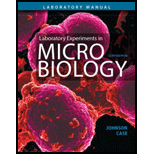
Concept explainers
Write the
To write:
The chemical reaction catalyzed by nitrate reductase
Introduction:
Catalysis is the process that raises the rate of a chemical reaction by adding an element known as a catalyst. Catalyst is not utilized in the reaction. The catalyst usually forms a temporary intermediate product.
Chemical reactions occur rapidly in the presence (or existence) of a catalyst because the catalyst gives an alternative reaction pathway with lower activation energy than the non-catalyzed mechanism.
In the presence (or existence) of a catalyst, less free energy is needed to reach the transition state, but the total free energy to the products from the reactants does not change. As compared to the non-catalyzed reaction, catalyzed reactions have lower activation energy.
Explanation of Solution
Nitrate reductase is molybdenoenzymes. It is responsible for catalyzing the nitrate assimilation (rate-limiting step). It is not only accountable for catalyzing, but also increases the production of amino acids in tea leaves.
Nitrogen assimilation forms organic nitrogen compounds (like amino acids) from inorganic nitrogen compounds existing in the atmosphere. The first step of this process is the decrease of nitrate to nitrite in the cytosol. It is catalyzed by nitrate reductase.
The chemical reaction catalyzed by nitrate reductase is nitrogen assimilation.
Want to see more full solutions like this?
Chapter 27 Solutions
Laboratory Experiments in Microbiology (12th Edition) (What's New in Microbiology)
- Given the following enzyme catalyzed reaction, identify the class and subclass of the enzyme involved: %3D CH3CH CH,CH2 SCOA SCOA COO СОarrow_forwardName the components of the hexose-monophosphate pathway that detoxify peroxide and the process that accomplishes detoxification.arrow_forwardComplete the following reactions: NADH, H+ oxidoreductase O2 oxidoreductasearrow_forward
- NAD+ coenzyme is required for the reaction of ethanol in the liver to ethanal and NADH. Write down the metabolic reaction below:arrow_forwardGiven the following enzyme-catalyzed reaction, identify the class and subclass of the enzyme involved. HO Class: [Select] COO™ NH3* Subclass: [Select] H₂O H₂C= COO™ NH3*arrow_forwardName the substrate for each of the following enzymes and the products produced from the enzyme-catalyzed reaction: amylase, protease, peptidase, and lipasearrow_forward
- For the following reactions, name both the enzyme that catalyzes the reaction and the required coenzyme:arrow_forwardGiven the following enzyme-catalyzed reaction, identify the class and subclass of the enzyme involved. H H e ООС Class: [Select] Subclass: [Select] COO -H H + FAD H ООС COO + FADH₂arrow_forwardName two oxidizing agents that act as coenzyme with oxidoreductasesarrow_forward
- Where is the dissimilative nitrate reductase found in the cell?What unusual metal does it contain?arrow_forwardLactate can be converted into pyruvate by the enzyme lactate dehydrogenase and the coenzyme NAD+. Write the reaction in the standard biochemical format, using a curved arrow to show the involvement of NAD+.arrow_forwardThe following reaction is catalyzed by this type of enzyme? Coo COO™ I HIC-H H-C-H COO™ succinate isomerase hydrolase O ligase transferase oxidoreductase succinate dehydrogenase FAD FADH2 H-C || C-H COO fumaratearrow_forward
 Human Anatomy & Physiology (11th Edition)BiologyISBN:9780134580999Author:Elaine N. Marieb, Katja N. HoehnPublisher:PEARSON
Human Anatomy & Physiology (11th Edition)BiologyISBN:9780134580999Author:Elaine N. Marieb, Katja N. HoehnPublisher:PEARSON Biology 2eBiologyISBN:9781947172517Author:Matthew Douglas, Jung Choi, Mary Ann ClarkPublisher:OpenStax
Biology 2eBiologyISBN:9781947172517Author:Matthew Douglas, Jung Choi, Mary Ann ClarkPublisher:OpenStax Anatomy & PhysiologyBiologyISBN:9781259398629Author:McKinley, Michael P., O'loughlin, Valerie Dean, Bidle, Theresa StouterPublisher:Mcgraw Hill Education,
Anatomy & PhysiologyBiologyISBN:9781259398629Author:McKinley, Michael P., O'loughlin, Valerie Dean, Bidle, Theresa StouterPublisher:Mcgraw Hill Education, Molecular Biology of the Cell (Sixth Edition)BiologyISBN:9780815344322Author:Bruce Alberts, Alexander D. Johnson, Julian Lewis, David Morgan, Martin Raff, Keith Roberts, Peter WalterPublisher:W. W. Norton & Company
Molecular Biology of the Cell (Sixth Edition)BiologyISBN:9780815344322Author:Bruce Alberts, Alexander D. Johnson, Julian Lewis, David Morgan, Martin Raff, Keith Roberts, Peter WalterPublisher:W. W. Norton & Company Laboratory Manual For Human Anatomy & PhysiologyBiologyISBN:9781260159363Author:Martin, Terry R., Prentice-craver, CynthiaPublisher:McGraw-Hill Publishing Co.
Laboratory Manual For Human Anatomy & PhysiologyBiologyISBN:9781260159363Author:Martin, Terry R., Prentice-craver, CynthiaPublisher:McGraw-Hill Publishing Co. Inquiry Into Life (16th Edition)BiologyISBN:9781260231700Author:Sylvia S. Mader, Michael WindelspechtPublisher:McGraw Hill Education
Inquiry Into Life (16th Edition)BiologyISBN:9781260231700Author:Sylvia S. Mader, Michael WindelspechtPublisher:McGraw Hill Education





